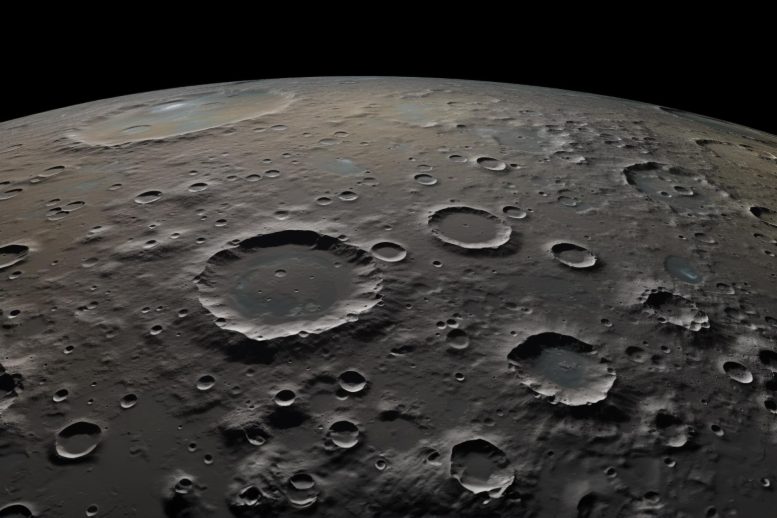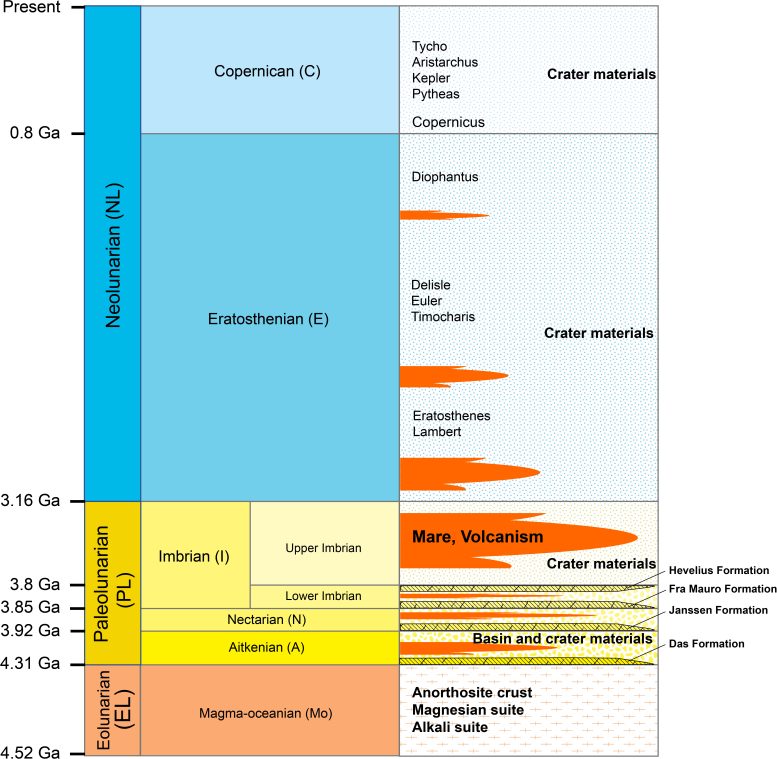
New research led by Dr. Dijun Guo from the National Space Science Center at the Chinese Academy of Sciences, Dr. Jianhzong Liu from the Institute of Geochemistry at the Chinese Academy of Sciences, and Dr. James W Head from Brown University reevaluates the basic lunar stratigraphic timeline, proposing significant revisions to incorporate a broader and more integrated perspective. This update considers the substantial progress made in lunar science since the Apollo missions.
To begin with, the Moon’s evolutionary history is divided into three distinct phases based on the temporal interplay of exogenic and endogenic processes in altering the Moon. These phases are defined as Eon-level time scale units, which provide insights into the temporal dynamics of lunar evolution. The Eolunarian Eon (4.52–4.31 Ga), refers to magma ocean formation, differentiation, and the solidification of the primary crust, a phase of evolution that largely involved endogenic forces and processes.

The Paleolunarian Eon (4.31–3.16 Ga), is characterized by comparable effects of endogenic and exogenic processes, including great impact events and significant volcanic activities. The Neolunarian Eon (3.16 Ga–present), represents the era dominated by exogenic processes, characterized by reduced volcanic activities and the prevalence of impact events in modifying the lunar surface.
Refinement of Lunar Time Scale
Furthermore, the researchers have identified the ejecta stratum of the South Pole-Aitken Basin and named it “Das Formation”. As the oldest stratum resulting from exogenic processes within the lunar crust, the Das Formation serves as the boundary between the Eolunarian and Paleolunarian Eons. By utilizing the Das Formation as a marker, the previously defined Pre-Nectarian Period is further divided into two distinct periods: the early Magma-Oceanian Period and the relatively later Aitkenian Period.

The newly proposed lunar time scale scheme, consisting of three Eons and six Periods units, offers a systematic framework for describing the evolutionary history of the Moon. This scheme effectively illustrates the advantages of expressing the progression, development, and transformation of both endogenic and exogenic processes that have taken place on the Moon. The scheme has been applied in the 1:2.5 million-scale lunar global geologic map compiled by the same group, and it holds significant implications for studying the geological evolution of other terrestrial planets.
Reference: “A lunar time scale from the perspective of the Moon’s dynamic evolution” by Dijun Guo, Jianzhong Liu, James W. Head, Fuqin Zhang, Zongcheng Ling, Shengbo Chen, Jianping Chen, Xiaozhong Ding, Jinzhu Ji and Ziyuan Ouyang, 15 December 2023, Science China Earth Sciences.
DOI: 10.1007/s11430-022-1183-4